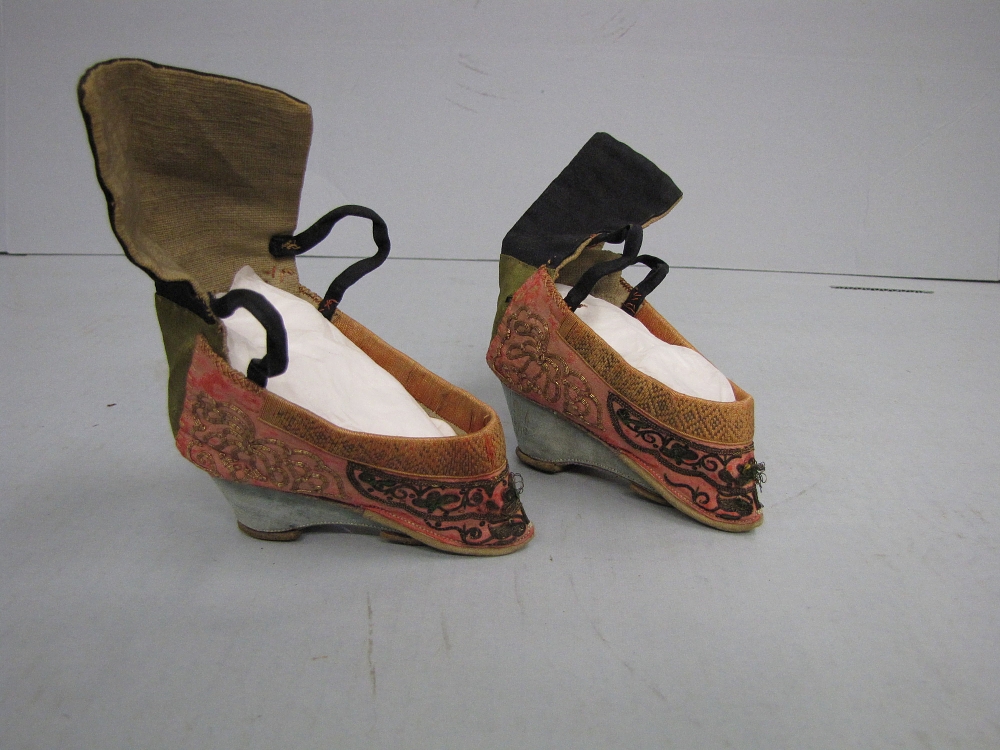
Chinese slippers, c. 1900, held by National Museum of American History, Kenneth E. Behring Center.
Girls have always been under the control of their parents, extended families, communities, and governments, their minds and bodies being policed at all times. The most extreme example of this is the Chinese practice of foot binding. Thought to have begun around 900 CE, the earliest evidence of footbinding comes from around 1240 and it persisted until the early 20th century, despite being made illegal in the 17th century. The most shocking aspect of foot binding, beyond the horrific images of actual bound feet, is the devotion Chinese women had to continuing the practice that hobbled thousands of girls.
Comparable to the tiny waist created by the corset and adored by Europe, the Chinese revered a tiny foot. They were called lotus feet and could be as small as 3 inches long. Tied up with silk ribbons, girls were made to walk long distance to break their arches, and excess flesh was cut or rotted away. Not only was the binding of the foot excruciatingly painful, it meant that once the two year process was complete, the girls could not move around without assistance. As time went on, it even became a symbol of ethnic pride and girls’ devotion to Confucian ideals. These slippers from the Smithsonian’s National Museum of American History show that the practice was imported to America with early 20th century Chinese immigration.
It is equally shocking that despite being rejected by society now, according to the Smithsonian, the last shoe factory making lotus shoes closed in 1999. It makes us pause to think how could women inflict this kind of cruelty on each other for the sake of fashion and social norms, but female genital mutilation continues to this day with the cutting being almost exclusively performed by older women. When will this kind of behavior end?
-Ashley E. Remer
Head Girl
Girl Museum Inc.
For more information on Chinese footbinding, check out the Smithsonian Magazine article, “Why Footbinding Persisted in China for a Millennium,” by Amanda Foreman.
This post is part of our 52 Objects in the History of Girlhood exhibition. Each week during 2017, we explore a historical object and its relation to girls’ history. Stay tuned to discover the incredible history of girls, and be sure to visit the complete exhibition to discover the integral role girls have played since the dawn of time.
